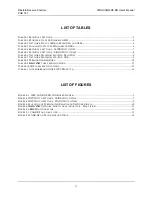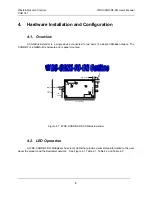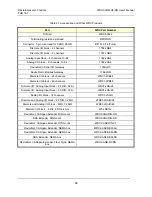
Western Reserve Controls
WRC-CANR-DF-DN User’s Manual
PUB 14.1
9
4.5. Network Cabling and Configuration
This section provides general guidelines for connecting DeviceNet and SDS systems. You can find
detailed specifications in the referenced ODVA DeviceNet and Honeywell SDS specifications.
4.5.1. Cable Lengths
The following provide cable length limits for Devi ceNet and SDS systems. These numbers apply
independently to each physical section of the network, whether it is copper or fiber.
Table 4-6 Network Maximum Lengths - DeviceNet
Trunk Line Length
Drop Length
Maximum Distance
Maximum
Cumulative
Baud Rate
Meters
Feet
Meters
Feet
Meters
Feet
125 Kbits/s
500 m
1640 ft
6 m
20 ft
156 m
512 ft.
250 Kbits/s
250 m
820 ft
6 m
20 ft
78 m
256 ft.
500 Kbits/s
100 m
328 ft
6 m
20 ft
39 m
128 ft.
DeviceNet has a limit of 64 nodes per network for any baud rate. The CANR-DF is transparent to the
network and does not count as an addressed device. However,
Table 4-7 Network Maximum Lengths - SDS
Trunk Line Length
(maximum)
Drop Length
(maximum)
Baud Rate
Meters
Feet
Meters
Feet
No. of
Nodes
125 Kbits/s
457.2
1500
3.6
12
64
250 Kbits/s
182.8
600
1.8
6
64
500 Kbits/s
91.4
300
0.9
3
64
1 Mbits/s
22.8
75
0.3
1
32
SDS has a limit of 32 nodes per network for any baud rate. The CANR-DF does not count as an
addressed device.
4.5.2. Network Termination
A CAN-Bus system
must be terminated at each end of a copper trunk line
. The host
controller and the
last
node device or WRC CAN-Bus Extender on the network must always be terminated
to match impedance and eliminate reflections, even if only two nodes are present. Follow the information
below when using a CANR-DF.
Trunk line use:
For the purpose of network termination, the CANR-DF is treated as the last node on the copper
section of the trunk network (side A) to which it is connected. Therefore, when a CANR-DF is used directly







































